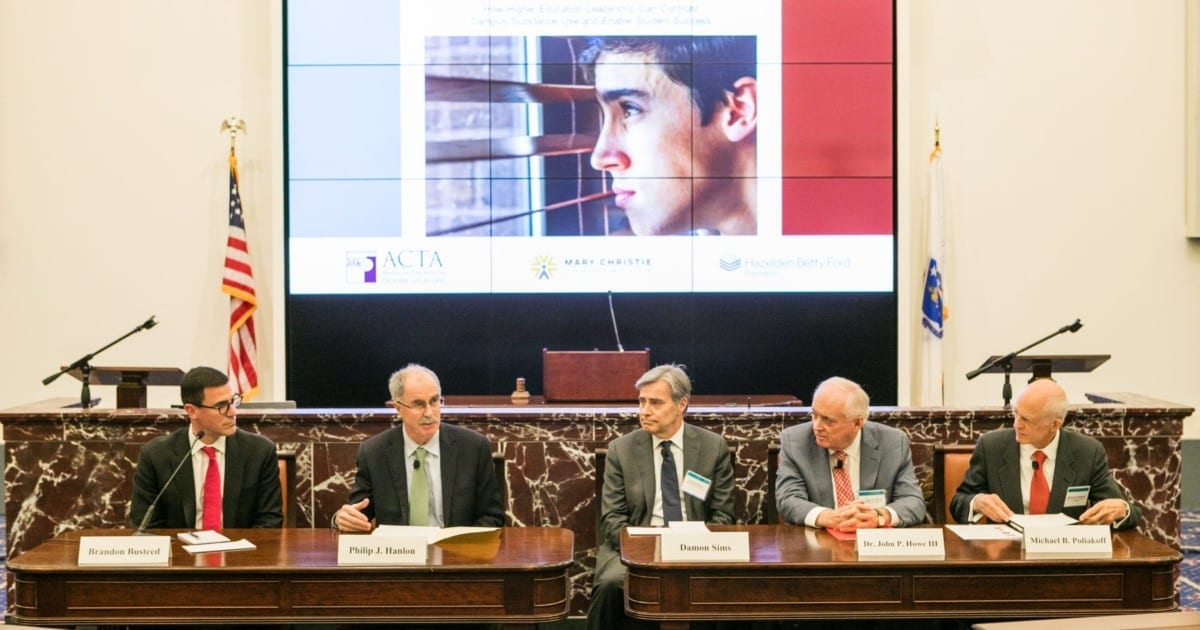Vaping, the use of electronic cigarettes to vaporize nicotine-laden liquid, has become widespread within American high schools, colleges, and universities. These institutions are faced with the challenge of deciding whether they should adopt vaping-friendly policies, as a means of encouraging smoking cessation and harm reduction, or if they should ban vaping in order to protect students from the harms that vaping poses to both people that vape and to those who do not. Academic institutions must balance the interest of nonsmokers against those of smokers in order to decide upon a policy.
Vaping is a growing issue on campuses. While in 2017, 9% of college students surveyed reported that they had vaped nicotine in the prior month, by 2018, 15% of college students surveyed reported that they had done so. In contrast, only 11% of the people aged 21 to 22 that were surveyed in 2018 reported that they had smoked cigarettes in the prior month.
The use of electronic cigarettes has been promoted as a harm reduction strategy on the grounds that vaping does not expose smokers’ lungs to tar, unlike tobacco products. A study of 5,863 adults who had made at least one attempt to quit smoking over the prior twelve months found that electronic cigarette users were significantly more likely to have been able to abstain from smoking than people that used over-the-counter nicotine replacement therapy or attempted to quit smoking without an aide. While 20.0% of electronic cigarette users reported having been able to abstain from smoking, only 10.1% of people using nicotine replacement therapy and 15.4% of those using no aide reported having been able to do so. Thus, restrictions on vaping have the potential to make it more difficult for students to quit smoking.
While vaping has the potential to serve as an alternative to tobacco use, it introduces additional challenges. Vaping liquid has been sold in a variety of flavors, including fruit, menthol, and tobacco, leading vaping to be appealing to some people who might never have considered smoking tobacco products. There is research to suggest that inhaling the flavoring itself may be harmful, in addition to the harm posed by the nicotine and other additives. While flavorings have been demonstrated to be safe as food additives to be consumed, they have not been demonstrated to be safe for inhalation. Chronic exposure to diacetyl, a component of the artificial flavoring that gives microwave popcorn its buttery taste, has been shown to cause development of bronchiolitis obliterans. Diacetyl is used as a flavoring agent in some vaping liquids.
Furthermore, vaping exposes people to secondhand smoke and thirdhand smoke. People are exposed to secondhand smoke when they are near someone else who is smoking or vaping. Thirdhand smoke exposure occurs when molecules from smoking or vaping cling to the objects in an environment, and then act as an indoor pollutant to anyone interacting with an environment. This is of particular concern as institutions grapple with COVID-19, as any injury to the lungs – be it directly through vaping, or indirectly through secondhand or thirdhand smoke – has the potential to lead to worse outcomes.
Given the benefits and harms of vaping, there have been policies created to regulate it. After a series of incidents of severe vaping-associated lung illness, which were believed to have likely been caused by the vitamin E acetate found in vaping liquid, there was a greater call for government action. In response to these issues, the U.S. Food & Drug Administration (FDA) announced on January 2, 2020 that it would take action against the manufacturers of cartridge-based e-cigarette products in flavors with the potential to appeal to children, namely in fruit and mint flavors. As a result of the policy, only the sale of tobacco-flavored and menthol-flavored e-cigarette products are permitted to be sold by manufacturers that have not had a premarket application to the FDA approved, pursuant to the Tobacco Control Act.
Many states have gone beyond the Federal regulations to create additional regulations regarding electronic cigarette use. In Massachusetts, there was a temporary in-store and online ban of the sale of vaping products in order to better study their harms before reintroducing them to the market. At the end of the ban in December 2019, the governor prohibited the sale of flavored e-cigarette products, including those flavored with menthol. Other states, including California and New York, have passed regulations prohibiting vaping in environments in which smoking is not allowed, such as in bars and workplaces. Meanwhile, a number of states, including Florida and Texas, have not enacted any state-wide bans, but have permitted localities to enact bans if they wish to do so. In contrast, some states, including Tennessee and Nevada, have not issued any state-wide bans and have prohibited localities from doing so.
Campuses have varied in their willingness to prohibit the use of electronic cigarettes on their grounds. Duke University has enacted a policy of prohibiting the use of all combustible tobacco products on its grounds, effective July 1, 2020. The policy explicitly states that non-combustible nicotine products, including electronic cigarettes and chewing tobacco will not be included in the ban. While Duke has taken a middle ground approach, over 2,000 colleges and universities in the United States have enacted policies prohibiting electronic cigarette use on campus.
There is variation at the state and campus level in policy towards vaping, as there are differing opinions as to how to weigh its benefits and harms. There are likewise different levels of cultural acceptance of tobacco and nicotine-based products in different parts of the country, which may be a source of policy variation. While 22.7% of Southerners smoked cigarettes in 2016, only 16.3% of people in the West did so.
As colleges and universities reopen their campuses after closures due to COVID-19, vaping policies need to be revisited. Vaping and smoking are incompatible with properly wearing a mask. The aerosols and vapors released by electronic cigarettes and other forms of smoking have the potential to both be a source of viral spread and to cause injury to the lungs that may worsen COVID-19 outcomes. Sharing electronic cigarette devices likewise could potentially lead to the spread of COVID-19. These hazards can be managed if students are required to only vape in isolated, outdoor locations.
While there is some evidence that people with a history of any form of smoking may be more vulnerable to a COVID-19 infection, and to develop serious complications if they contract one, there is currently limited research directly addressing the connection between vaping and COVID-19 outcomes. In light of this, colleges and universities may wish to promote other forms of smoking cessation, such as nicotine gum and patches.
Within the parameters of state and local law, each campus must decide the extent to which it wishes to permit vaping on campus. Institutions with pre-existing policies should revisit them to ensure that they are aligned with their COVID-19 prevention strategy. Regardless of the policies chosen, it is important for campuses to thoughtfully develop vaping policies consistent with their values, as vaping is playing an increasingly large role in the lives of students.




